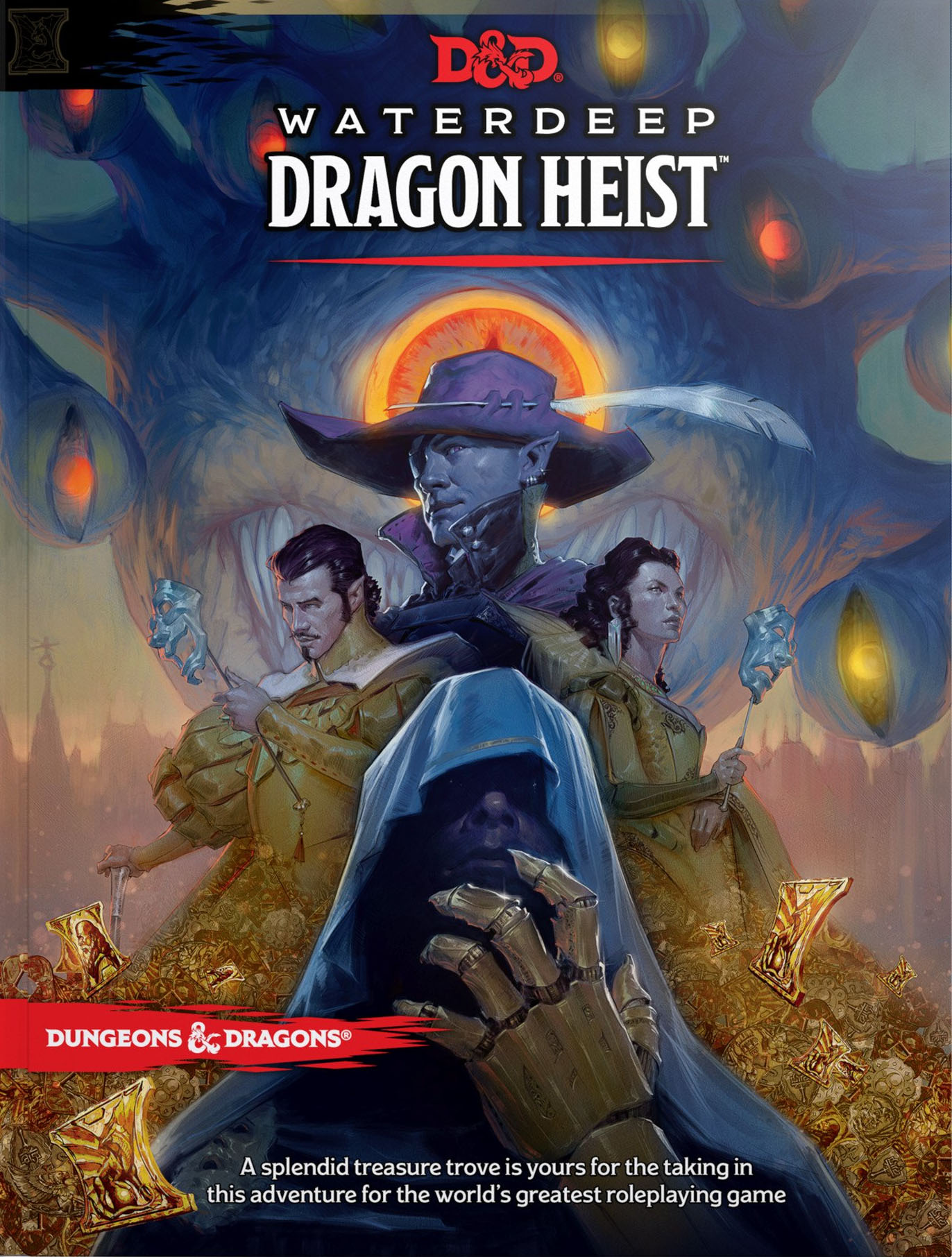In the past few days I’ve been asked several times why I still play Dungeons & Dragons.
After all, I’ve criticized the rules, the adventures, the design, and even the company. So why am I still running and playing this game?
There are a bunch of answers to this question. In fact, part of the answer to the question is that there ARE so many answers to the question.
The most basic answer is the Arneson & Gygax designed one hell of a game, and with the exception of the most mangled edition of the game, D&D has never drifted so far that its core gameplay has become unrecognizable. There was a time, back in the ’90s, when, so frustrated that my house rules for AD&D had become longer than the core rulebooks themselves, I did give up on D&D for a while, wandering off in pursuit of the One True Way of Gaming. I’ve since learned that there is no One True Way of Gaming, which makes it easier to appreciate D&D for what it is instead of dwelling on everything it isn’t.
Another answer is, in the words of Ryan Dancey, network externality: There are a lot more people who want to play D&D than there are people who want to play any other RPG you’d care to name. It’s just easier to recruit players for D&D and, if I’m looking for a group to play in, I’m statistically more likely to find a group playing D&D. This matters less to me than it used to: After years of running open tables, I’ve recruited a large network of players I can tap into regardless of what system I’m running. (For example, I’ve had little or no difficulty getting players for my new Mothership-based open table.) But you can never completely escape D&D’s gravity well: I’m currently setting up a Heroes of the Borderlands table for my daughter and some of her friends who are desperately interested in playing D&D for the first time. I could try to run something else for them, but I’m not going to tell a bunch of kids to NOT be excited about the game they’re already excited about.
My own familiarity with D&D and its milieu has its advantages. Not only do I like D&D-esque fantasy in general, but my immense experience prepping and running D&D adventures means that I have a very large “bag of stuff” (as Robert Conley puts it) that makes it a lot easier for me to create and improvise stuff while playing D&D.
(This can actually be a double-edged sword if you’re not careful: Yes, I have a finely honed sense of what D&D-eseque fantasy means to me. But that can also be a creative rut that makes it difficult to break out of those tropes. Even with conscious effort, it can be easy to fall back into that rut, specifically because of the comfort and confidence it affords.)
This, of course, would apply to any of the many D&D-adjacent RPGs that are out there. But as a professional RPG designer, it’s also frequently important for me to stay tuned into the industry leader. I’ve had people ask me, for example, why So You Want to Be a Game Master assumes that the reader is most likely interested in running D&D and only pivots to discussing other systems in earnest after the newbie has gotten their feet under them. And the answer, of course, is that this is just the reality of things. D&D remains not only the primary gateway to the RPG hobby, but can still be relied on as a universal touchstone. (To the degree that, when I discuss other RPGs or RPGs in general in my writing or my videos, I not infrequently get comments from people confused because they think D&D is the only RPG in existence.)
(This need to stay in-tune with the current edition of D&D can be another double-edged sword for me. I’d probably have enjoyed several of the D&D 5th Edition games I’ve run over the years more if I’d house rules them more aggressively.)
D&D’s dominance, particularly in the 3E/5E OGL era, also means that D&D is blessed with bountiful source material. For example, when I was working on The Vladaam Affair last week and needed stat blocks for the archmages of the Red Company of Magi, all I needed to do was hit up Volo’s Guide to Monsters. I’ve talked in the past about looting bestiaries and trawling published modules when doing adventure and campaign prep. It’s something that very few other games even come close to achieving.
(This is something that I wish more RPGs would try to provide in a targeted fashion. Not only do I think published adventures are essential for an RPG, but modular components designed to be plugged into prep are vital. For example, Eclipse Phase produced a supplement called NPC File 1 which was just a collection of supporting cast stat blocks. It was literally a game changer for running Eclipse Phase games, because it was so effective at speeding up prep and enabling improvisation when the players jagged off in an unexpected direction. But, unfortunately, they never released a sequel and have never updated the NPC File for 2nd Edition.)
To make a long story short (too late), I really don’t see a time in my future when D&D won’t be part of my life.
Recently, though, I have been giving some long, hard thought to my relationship as a consumer (and reviewer) of Wizard of the Coast’s official D&D books. During the November meeting of  the Alexandrian Hangout Club, I was asked if I would be reviewing Forgotten Realms: Adventures in Faerun. This was a particularly interesting release because it included 50+ one-page adventures, which definitely sounds like my jam. The only problem? I flipped through the book at my local game store and saw that, like other recent releases, many of the dungeon maps aren’t properly keyed. And that was only the most obvious failure in basic adventure design. (For a deeper dive, take a peek at Questing Beast’s recent video.)
the Alexandrian Hangout Club, I was asked if I would be reviewing Forgotten Realms: Adventures in Faerun. This was a particularly interesting release because it included 50+ one-page adventures, which definitely sounds like my jam. The only problem? I flipped through the book at my local game store and saw that, like other recent releases, many of the dungeon maps aren’t properly keyed. And that was only the most obvious failure in basic adventure design. (For a deeper dive, take a peek at Questing Beast’s recent video.)
Although I came somewhat late to D&D 5th Edition (finally getting sucked in by the intriguing promise of Dragon Heist), a combination of reasonably paced releases, financial security, and professional interest made it the first time that I lived out my childhood dream of buying every official D&D book as it came out. But I think that time is coming to an end. I may still be playing and running D&D 2024, but I think this revised edition is also a great jumping off point for me.
Will I be back some day? Probably. Last time I jumped off official D&D as a consumer was back in 2008, and I was gone for a decade. I have high hopes I’ll be back sooner this time. There’s new leadership at Wizards of the Coast, and perhaps we’ll see them right the ship over there.
Or perhaps not.
But either way: Good gaming!

















